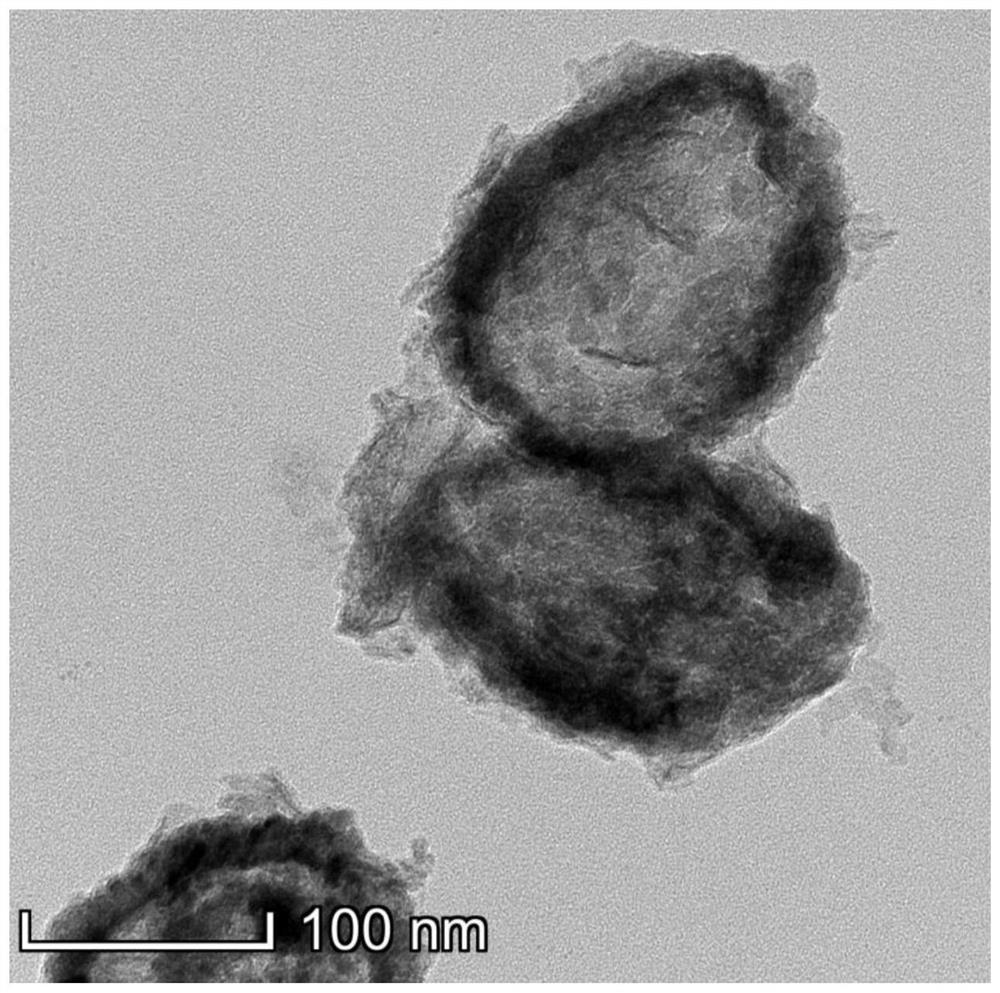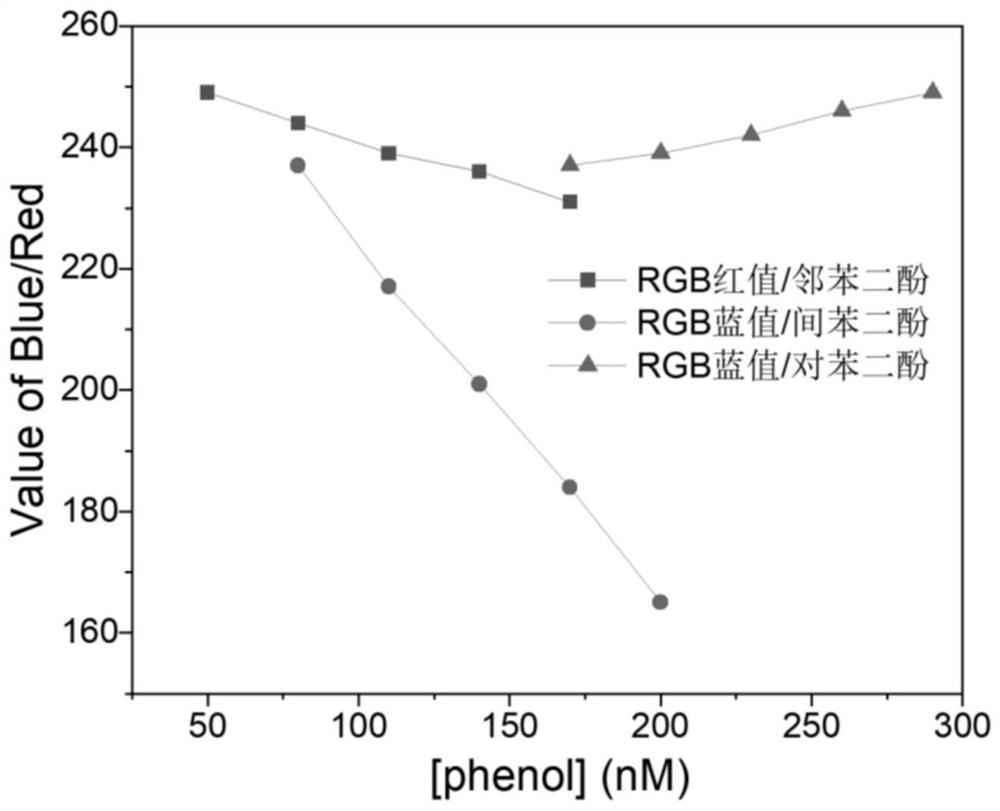Method for detecting dihydroxybenzene in water body by colorimetric method
A technology of dihydroxybenzene and colorimetry, applied in the field of chemical analysis, can solve the problems of high operation requirements, complicated preparation steps of modified electrodes, and high cost
- Summary
- Abstract
- Description
- Claims
- Application Information
AI Technical Summary
Problems solved by technology
Method used
Image
Examples
Embodiment 1
[0056] (1) Weigh 0.1g of "Cicada Pupa" structure (such as figure 1 Shown) CeO 2 (pore diameter 5nm, porosity 60%) and 0.0558gMnSO 4 4H 2 O, dissolve in 50mL water, ultrasonically disperse evenly, and stir with a magnetic stirrer for 60min, so that manganese ions can be evenly loaded on the white CeO 2 pores and surfaces.
[0057] (2) In order to increase the interaction between the above materials and the chromogenic molecule (2,2'-azino-bis-3-ethylbenzothiazoline-6-sulfonic acid, ABTS), and to slow down the Mn element in the actual test process For the loss in the medium, add 0.05mL 0.01mM cyclodextrin (Cyclodextrin, referred to as CD) to the system obtained in step (1), react for two hours, centrifuge with a high-speed centrifuge, take out the supernatant, wash at least three times, and finally The washed material was vacuum dried at 60°C.
[0058] (3) Disperse 20 mg of the material in step (2) in 4 mL of acetone, use a spray gun to 2 Spray the suspension onto a piece ...
Embodiment 2
[0065] (1) take by weighing the CeO of " cicada chrysalis " structure in 0.1g embodiment 1 2 and 0.0558gMnSO 4 4H 2 O, dissolved in 50mL of water, ultrasonically dispersed, stirred with a magnetic stirrer for 60min, so that manganese ions can be evenly loaded on the white CeO 2 pores and surfaces. Centrifuge with a high-speed centrifuge, take out the supernatant, wash at least three times, and finally vacuum-dry the washed material at 60°C.
[0066] (2) Disperse 20mg of nanozymes in 4mL of acetone, use a spray gun to 2 Spray the suspension onto a piece of test paper placed vertically, and dry it at room temperature for later use.
[0067] (3) Take 120 μL of 1mM TMB and 10 μL of hydroquinone in different concentrations (resorcinol, catechol and hydroquinone respectively), stir for 1 min, take 200uL of the mixed liquid and drop it on the test paper prepared in step 2 , the excess water permeates the test paper, and the TMB molecules remain on the test paper and are further ...
Embodiment 3
[0073] (1) Weigh 0.1g of CeO with "cubic" structure 2 (Such as figure 2 Shown, pore diameter 55nm, porosity 7%) and 0.0558gMnSO 4 4H 2 O, dissolved in 50mL of water, ultrasonically dispersed, stirred with a magnetic stirrer for 60min, so that manganese ions can be evenly loaded on CeO 2 On the surface.
[0074] (2) In order to increase the interaction between the above materials and the chromogenic molecule (3,3',5,5'-tetramethylbenzidine, TMB), and slow down the loss of Mn element during the actual test, in step (1 ) on the basis of adding 0.05mL 0.01mM chitosan (chitosan), after two hours of reaction, centrifuge with a high-speed centrifuge, take out the supernatant, wash at least three times, and finally vacuum-dry the washed material at 60°C.
[0075] (3) Disperse 20mg nanozymes in 4mL ethanol, use a spray gun to 2 Spray the suspension onto a piece of test paper placed vertically, and dry it at room temperature for later use.
[0076] (4) Take 120 μL of 1mM ABTS, 10...
PUM
| Property | Measurement | Unit |
|---|---|---|
| Aperture | aaaaa | aaaaa |
Abstract
Description
Claims
Application Information
 Login to View More
Login to View More - R&D
- Intellectual Property
- Life Sciences
- Materials
- Tech Scout
- Unparalleled Data Quality
- Higher Quality Content
- 60% Fewer Hallucinations
Browse by: Latest US Patents, China's latest patents, Technical Efficacy Thesaurus, Application Domain, Technology Topic, Popular Technical Reports.
© 2025 PatSnap. All rights reserved.Legal|Privacy policy|Modern Slavery Act Transparency Statement|Sitemap|About US| Contact US: help@patsnap.com



